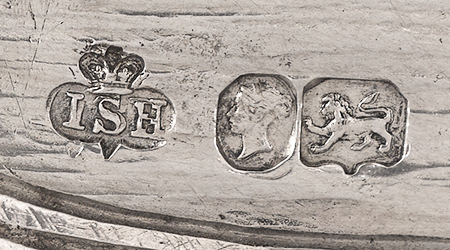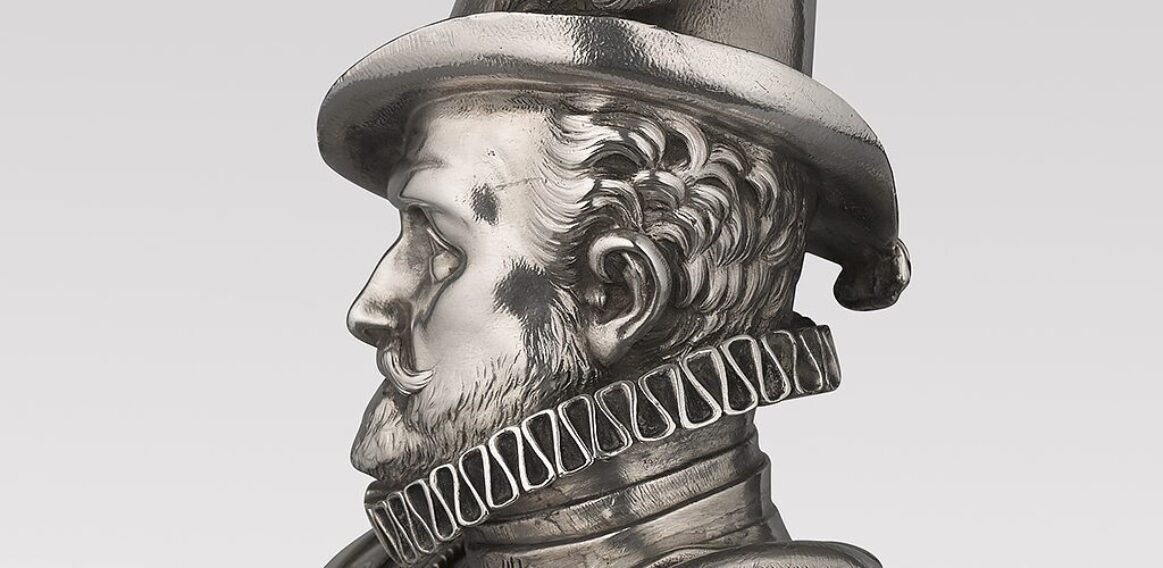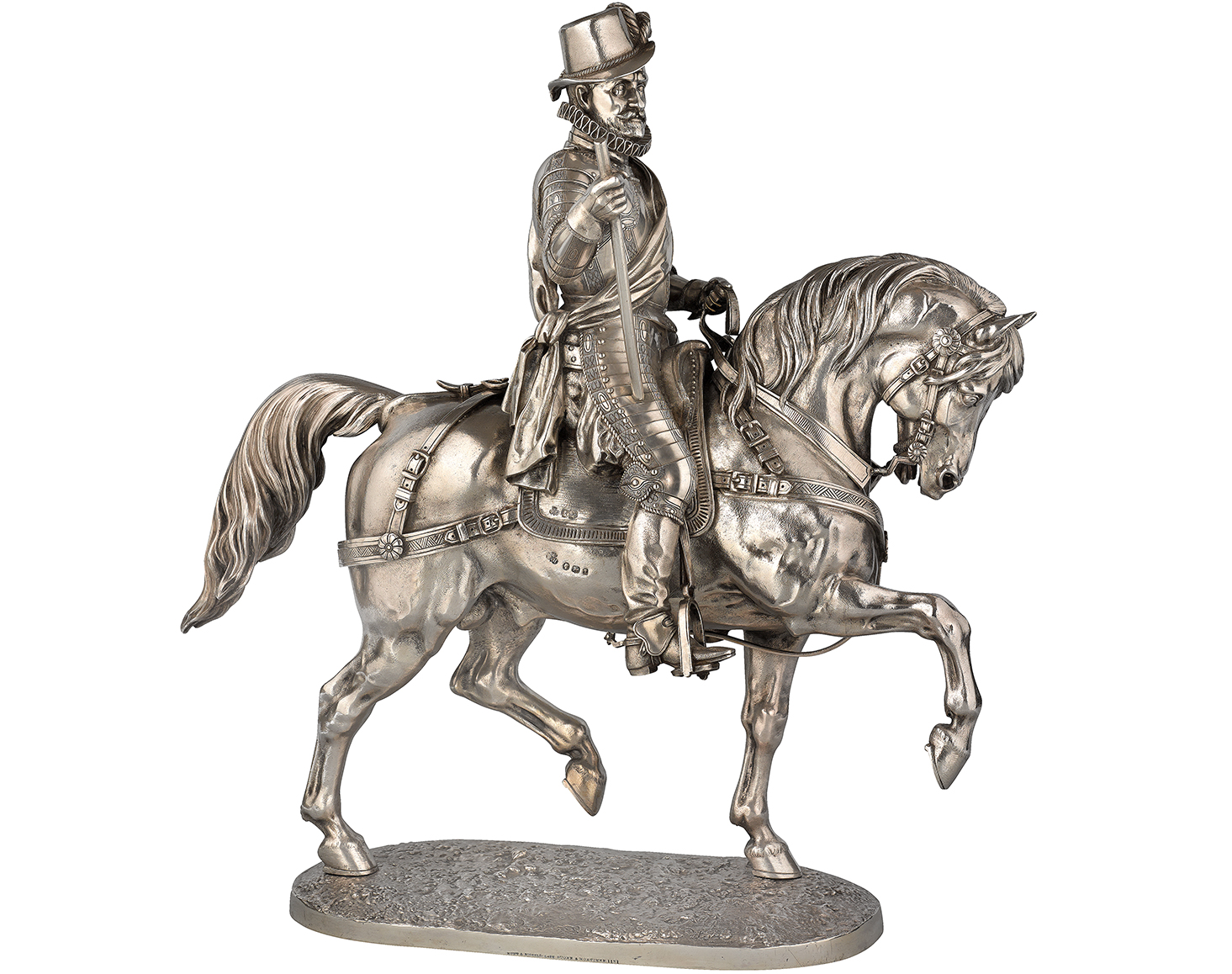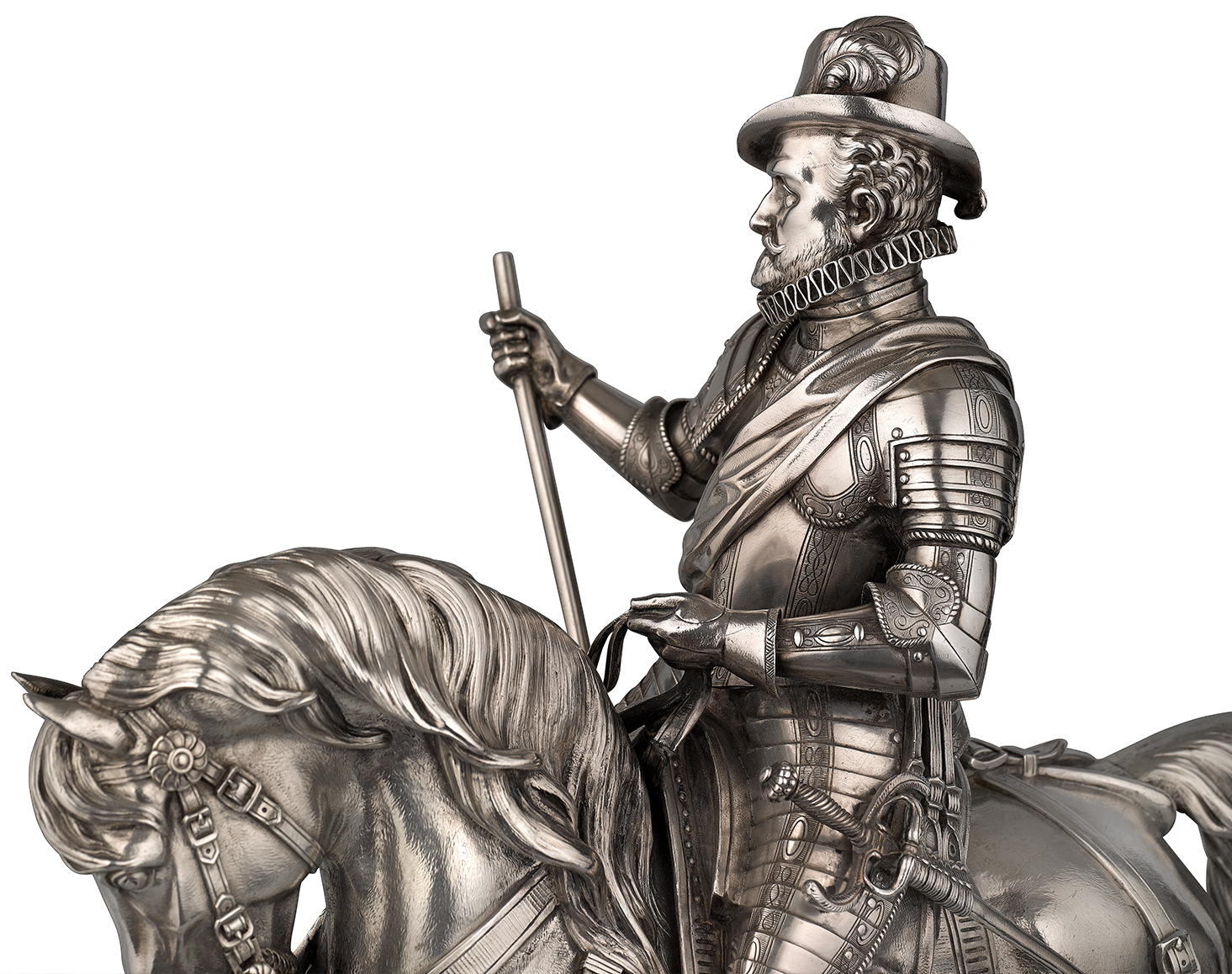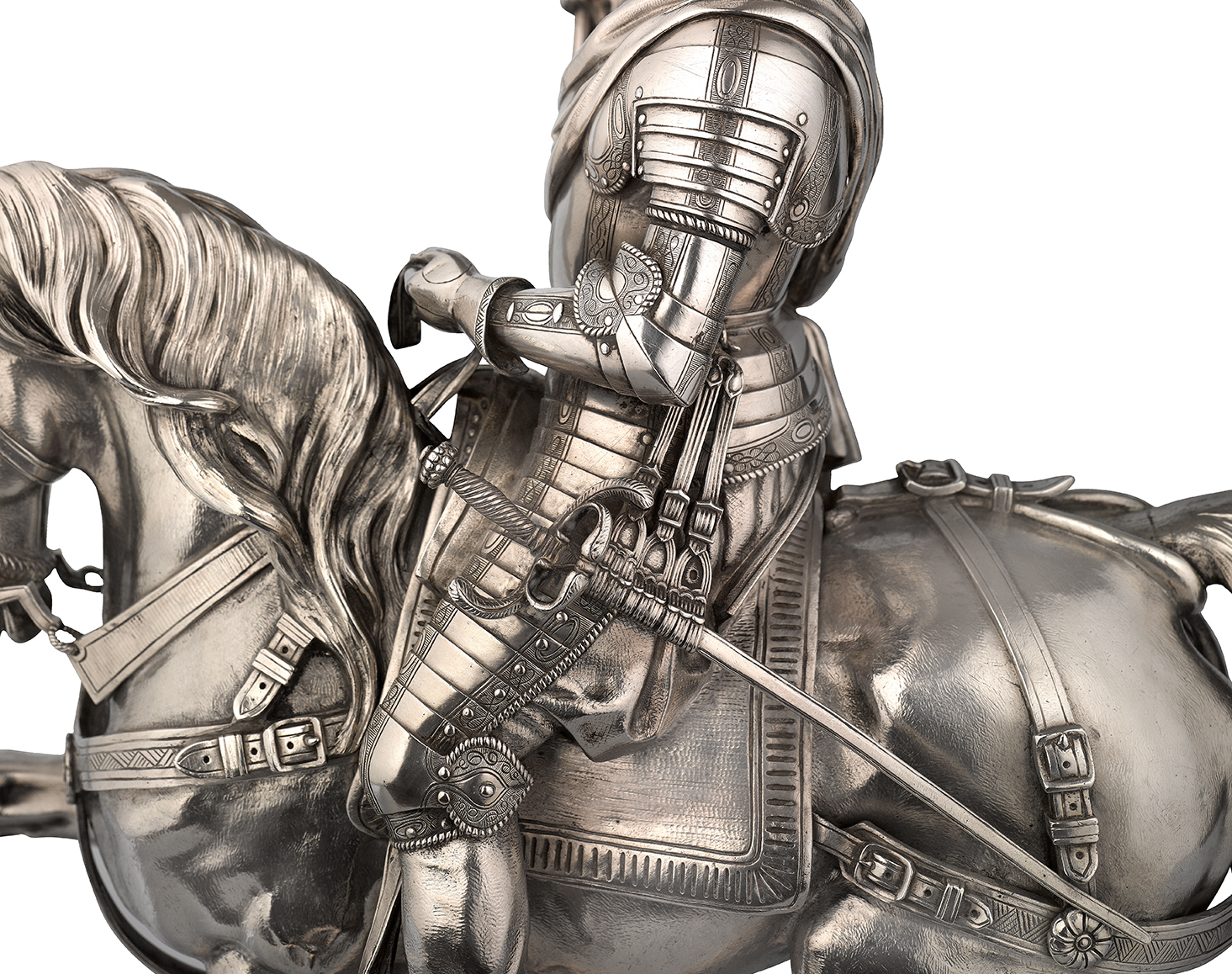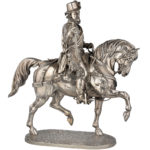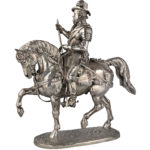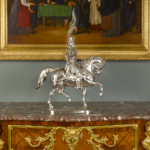The equestrian silver sculpture represents William I, Prince of Orange (1533-1584), the founder and liberator of The Netherlands. William I, also known as William the Silent, is considered a key figure in the transition of the provinces to the modern nation of the Netherlands.
The sculpture is a scaled-down reproduction, in pure silver, of the famous statue that currently stands in the courtyard of the Noordeinde Palace in The Hague, Netherlands. It was produced by Hunt & Roskell, a firm of silversmiths and jewellers to Queen Victoria based in Bond Street, London. It was designed by the French sculptor Count Émilien de Nieuwerkerke (1811-1891) after the statue in The Hague. Another bronze version of the original work, cast by Eck et Durand, is held in the Staatliche Kunsthalle Karlsruhe Museum in Karlsruhe, Germany.
This impressive sculpture reflects the pivotal role that William I, who led the Dutch revolt against the Spanish Habsburgs. Born to a noble family of German Protestants, William converted to Roman Catholicism as a youth as a condition for inheriting the title of Prince of Orange. William became close to the Habsburg family and served them as a member of the court of Margaret of Parma, governor of the Spanish Netherlands. Charles V was fond of William, and in 1555 made him the commander of his troops stationed on the Empire’s border with France. When Charles V abdicated, his son, Philip II, became King of Spain. Philip II was concerned about the spread of Protestantism in the Low Countries and determined to eradicate it using force. William, who was unhappy with Phillip’s persecution of Dutch Protestants and the centralisation of power towards Spain, turned against his former masters. He re-converted to Protestantism and, in 1568, led a rebellion against Philip II.
William’s nickname, William the Silent, describes his reputation as a taciturn and cautious individual. However, he proved highly determined in battle and led the Dutch to several successes in the fight against the Spanish. Declared an outlaw by Philip II in 1580, William was assassinated in Delft in 1584. Despite his death, he succeeded in his aim of founding a free and independent Dutch republic.
